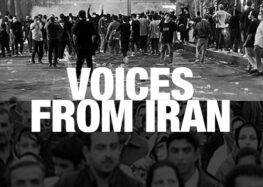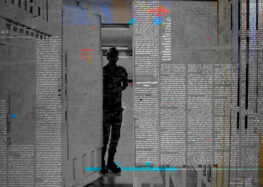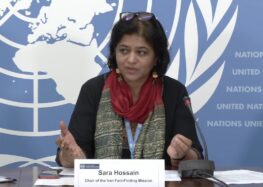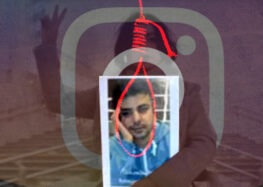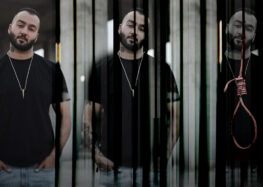At Least One Shot as Iran Deploys Armed Forces to Suppress “Woman, Life, Freedom” Protests
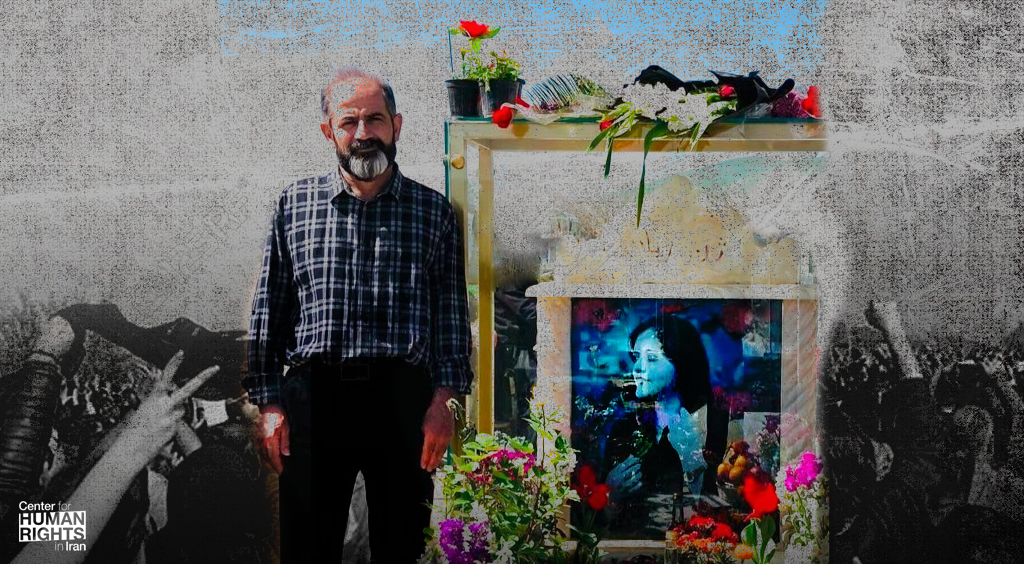
- Child Soldiers Used to Assist State Security Forces
- Relatives of Victims of State Violence, Activists Threatened to Refrain from Protesting
- Prisoners of Conscience Launch Solidarity Strikes, Women’s Prison Comes Under Attack
September 16, 2023 – While Iranians around the world commemorated the anniversary of Iran’s “Woman, Life, Freedom” movement with demonstrations, inside Iran, at least one civilian suffered a gunshot wound to the head as armed state security forces were deployed throughout the nation to suppress protests.
“One year after Jina Amini’s killing, not one Iranian official has been held accountable for her senseless death in state custody or for the killings of hundreds of peaceful protesters,” said Hadi Ghaemi, executive director of the Center for Human Rights in Iran (CHRI). “Instead, the authorities deployed armed forces into the cities while shamelessly threatening activists and family members of slain protesters in a desperate attempt to quell more peaceful demonstrations.”
“World leaders must urgently call upon Iranian authorities to cease the use of force to suppress dissent and protests, and it’s our collective responsibility to amplify the voices of Iranians within the country who are bravely speaking out,” he added.
“Given the unchecked state violence and repression in Iran, the international community should hold state officials accountable for grave rights violations in international courts on the principle of universal jurisdiction,” said Ghaemi.
One Shot by State Security Forces, Child Soldiers Exploited to Assist State Forces
Fardin Jafari, 27, was hospitalized after sustaining a head injury from a gunshot fired by state security forces stationed at the Aichi Cemetery in the city of Saqqez. This cemetery serves as the final resting place of 22-year-old Mahsa Jina Amini, whose killing in state custody one year ago ignited months of anti-state protests.
The shooting occurred after local authorities had deployed armed forces to the cemetery in an attempt to deter memorials and protests commemorating Amini’s death, which served as the catalyst for the country’s “Woman, Life, Freedom” movement. There is currently no immediate information available regarding the precise circumstances of the shooting or the individual’s condition.
Video footage shared online showed tear gas being used to suppress protests in cities including Tehran, Karaj, and Mashhad, where a clip showed a group of people in the city fleeing amid sounds of gunfire.
Despite the heavy state security presence, at the time of this writing CHRI can confirm protests in several cities including Tehran, where two females stood on a platform waving their mandatory headscarves and others gathered elsewhere chanting slogans, in Karaj, where a group chanted, “We are a great nation, we will take Iran back,” Arak, where protesters chanted “Death to Khamenei” (referring to the supreme leader), as well as the cities of Lahijan, Kermanshah, Sanandaj, Mashhad, Shiraz, Isfahan, Bukan, Izeh, and Rasht, where protesters chanted “Death to the dictator” and “Freedom, Freedom, Freedom!”
It is extremely difficult to confirm at this moment the actual number of cities that experienced protests or the extent of state violence due to the Iranian government’s restriction of the internet.
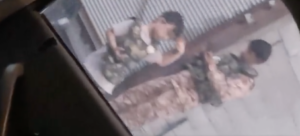
A clip shared online by the Kurdistan Human Rights Network shows child soldiers being used by Iranian authorities to quell protests.
Armed state forces had been stationed and were patrolling the streets of Iranian cities these past two days in an intimidating show of state power ahead of the September 16 anniversary of the killing of Mahsa Jina Amini in state custody.
Jarring footage shared online by the Kurdistan Human Rights Network also showed child soldiers being used by those forces to patrol the streets.
The network reported similar instances of child soldiers being used in other cities while safeguarding the anonymity of their sources. The recruitment and use of child soldiers constitute a war crime according to the International Criminal Court.
“Solidarity Strikes by Prisoners of Conscience; Women Prisoners Assaulted Amid Prison Fire
At least 20 women prisoners were reportedly injured after a fire broke out in the Qarchak prison for women, and security forces were rushed in to quell a protest, firing pellets and beating the women.
In other prisons, prominent women and male prisoners of conscience waged hunger strikes and sit-ins in solidarity with the “Woman, Life, Freedom” movement.
“We call upon the people of Iran and the world to be the voice of protesters and dissenters and support us,” said a joint statement posted on rights activist Narges Mohammadi’s Instagram page. The sit-in was joined by fellow prominent imprisoned activists including Sepideh Qolian, Golrokh Iraee, Azadeh Abedini, Shakila Monfared, Mahboubeh Rezaee, and Vida Rabbani
Male prisoners of conscience on hunger strike issued a joint statement announcing their hunger strike “to show solidarity with all non-violent activists for an independent, free, and developed Iran without any discrimination.” The prominent activists include Mohammad Najafi, Mostafa Tajzadeh, Saeid Madani, and Mehdi Mahmoudian.
Imprisoned university students Ali Younesi and Amir Hossein Moradi, held in Tehran’s Evin Prison, also announced that they were launching their hunger strike “in solidarity with the uprising of the people of Iran.”
Relatives of Victims of State Violence Threatened
On the heels of a weeks-long campaign of detaining and summoning relatives of victims of state violence, agents of Iran’s Intelligence Ministry today threatened family members of slain street protesters with arrests if they attended memorial ceremonies for their loved ones.
Mahsa Jina Amini’s father, Amjad Amini, whose daughter’s killing in Iranian state custody ignited months of anti-state protests, was briefly detained for the fourth time this month, and threatened not to visit his daughter’s grave or call for public mourning. At the time of this writing, he and his family were under house arrest, with their home surrounded by state security forces.
State forces also blocked access to Amini’s grave in the Aichi Cemetery in Saqqez city to prevent protests there. Additionally, the grave of Nika Shakarami, who was only 16 when killed during last year’s protests, was reportedly vandalized in Khorramabad city, Lorestan province.
Internet access was severely restricted or blocked in several Iranian cities, including Zahedan, where anti-state protests have been ongoing since last year. Iranian authorities have a documented history of curtailing internet access during protests, both to hinder protest coordination and to suppress the sharing of evidence of violence against peaceful protesters online.
Meanwhile, the Kurdistan Human Rights Network reported that shops in Kurdish-populated cities including Amini’s hometown of Saqqez had closed their doors in solidarity.
“The Iranian authorities’ deployment of armed forces, coupled with weeks-long detention and intimidation campaigns against activists and victims’ families, underscores the Iranian government’s deep fear of public dissent,” said Ghaemi.
“Protest and the right to mourn are fundamental rights consistently violated by Iranian authorities,” he added. “The excessive violence and unchecked impunity within the Iranian government continue to fuel Iranians’ demand for fundamental change.”
Read this article in Persian

